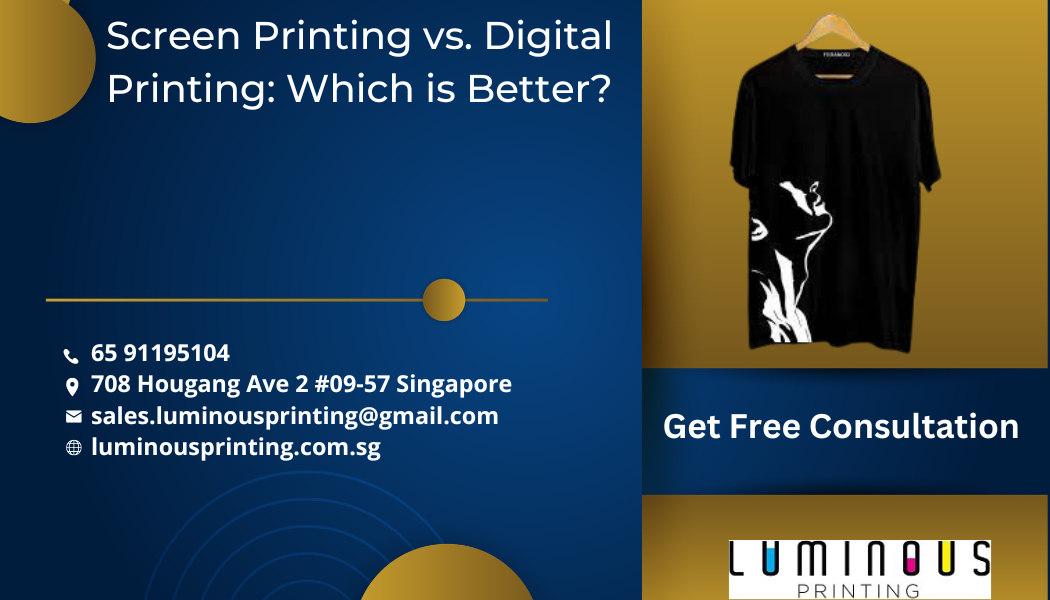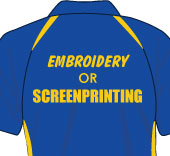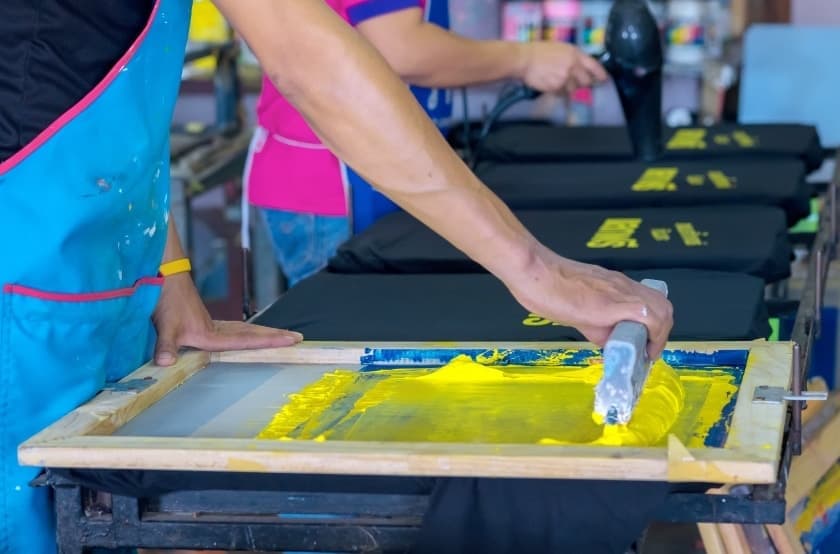Facts About Tx Tees Uncovered
Facts About Tx Tees Uncovered
Blog Article
The 20-Second Trick For Tx Tees
Table of ContentsThe 6-Second Trick For Tx TeesSome Ideas on Tx Tees You Should KnowThings about Tx TeesThe Basic Principles Of Tx Tees The Main Principles Of Tx Tees The Facts About Tx Tees RevealedTx Tees - Truths
That brings your overall to around $1,900 before tax and delivery. Accumulate other prices, like the number of utilities it requires to run the shop and the price of ink and emulsion per design. screen printing shop. Take the print below. This is a one-color photo, so the expense of ink per t-shirt is about 20 cents.The emulsion must just be a couple of cents considering that you 'd just require to layer one display for this task. Normally, printers attempt to make up to 45% revenue on a print task.

With DTF, you can publish a handful of t-shirts, or just one. Utilize the exact same calculator as the area above to calculate just how much earnings you 'd make using DTF transfers. Contrast the expenses and revenues to whichever method talks finest to your setup and procedure. Both screen printing and DTF have their niches in the globe.
Tx Tees - Truths
The very best way to understand? Ask about and see what print shops like yours are doing. screen printing shop. Try both out and see which you like much better
When you're picking what sort of printing technique to make use of for publishing your art work layouts on your garments, it is very important that you recognize the distinctions in between these two techniques so you can maximize results while reducing expenses. Screen printing is the most generally used technique for printing designs on textiles.
DTG printing is also referred to as area or direct to garment printing since it prints only what is needed instead of making a screen as display printers do. https://worldcosplay.net/member/1743892. Screen printing functions by screen filler squeegee display printing ink screen mesh display, then moving the image to garment making use of warm and/or stress
The DTG printer utilizes unique dye-sublimation inks that are applied right into a pre-designed image by an electronic printing system. The inks enter into the fabric, permitting for dynamic shades and outstanding detail. It's likewise called area or straight to garment printing because it publishes only what is needed rather of making a screen as display printers do.
10 Simple Techniques For Tx Tees
First, it's much faster - you can print a fullcolor picture in mins, in contrast to hours for screen printing. Second, there's no established time or prices involved - you can print any style you like, without having to produce a display initially. Third, there's no waste - because screen printers display print one layout at once, they need to evaluate each shade independently.
The paper is really pricey and can just be utilized when. Once it's printed on, it needs to be disposed of. - The preliminary purchase price is less than the upfront financial investment of DTG printers- You can publish multi-color layouts one display each time instead of having to print each shade independently like DTG printing.

The smart Trick of Tx Tees That Nobody is Discussing
Instead of making use of display mesh as screen printers see page do, dye sublimation printers utilize laser modern technology to transfer your pictures onto garments or paper. A warm process transfers the color from its solid-state straight right into the gas phase which consequently merges it onto textile substrates when they are rapidly heated up to high temperature levels under high stress.
Sublimation printing is environmentally friendly. It utilizes much less water than screenprinting, and due to the fact that it does not entail the usage of damaging solvents, it's risk-free for all sorts of garments. The color sublimation inks are additionally odorless when cured, unlike screen printers that use damaging chemicals throughout the display printing process that leave behind an undesirable odor.
They likewise save money on expensive devices like exposure units because dye sublimation printers don't require a UV exposure unit or a flash cure stove that is typically used in display printing (custom screen printing). What is straight to garment printing (DTG Printing)? DTG printing is an electronic screenprinting process that prints directly onto fabric using specialized inkjet printers
Tx Tees for Dummies
DTG printing offers several benefits over traditional screenprinting, consisting of the ability to publish photographic quality pictures, greater shade vibrancy, and the ability to publish styles on darker textiles. DTG printers work by heating the textile ink till it develops into a gas. The gas then penetrates the material, bonding with the fibers to develop a long-term print.

Screen printers simply prepare their display after that begin printing up until they run out of item or ink.- There is a variety of seasoned display printers around the world, which can be valuable for beginners. - It's a slower process - display printers usually need to wait on the ink to dry before they can publish the following color- Display printers call for hands-on labor, so there's a higher learning contour and it takes longer to create a top notch style- Screen printing isn't as exact as DTG printing, so you may get some "blood loss" of colors from one part of the photo onto one more if not done effectively.
How Tx Tees can Save You Time, Stress, and Money.
Nevertheless, rather than utilizing display mesh as screen printers do, color sublimation printers use laser innovation to move your pictures onto garments or paper. A heat process moves the dye from its solid-state directly right into the gas stage which consequently integrates it onto fabric substratums when they are swiftly heated to heats under high stress.
Sublimation printing is environment-friendly. It makes use of less water than screenprinting, and since it does not involve using dangerous solvents, it's safe for all kinds of clothing. The color sublimation inks are also odor free when treated, unlike display printers that make use of hazardous chemicals throughout the display printing procedure that leave an unpleasant odor.
They likewise conserve cash on pricey tools like exposure units because dye sublimation printers don't need a UV direct exposure device or a flash treatment oven that is generally utilized in display printing. What is straight to garment printing (DTG Printing)? DTG printing is an electronic screenprinting procedure that publishes straight onto material making use of specialized inkjet printers.
The Ultimate Guide To Tx Tees
DTG printing provides several benefits over standard screenprinting, consisting of the capability to print photographic top quality photos, higher color vibrancy, and the ability to publish layouts on darker materials. DTG printers work by heating up the textile ink until it transforms right into a gas. The gas then permeates the textile, bonding with the fibers to produce a permanent print.
Report this page